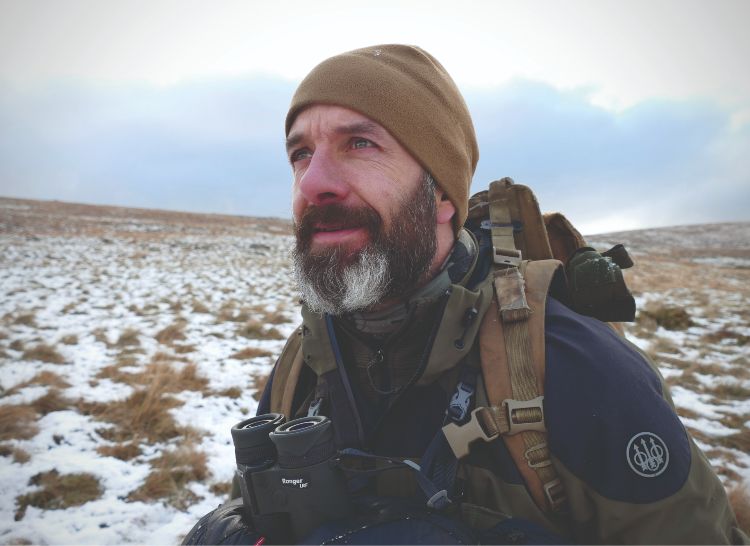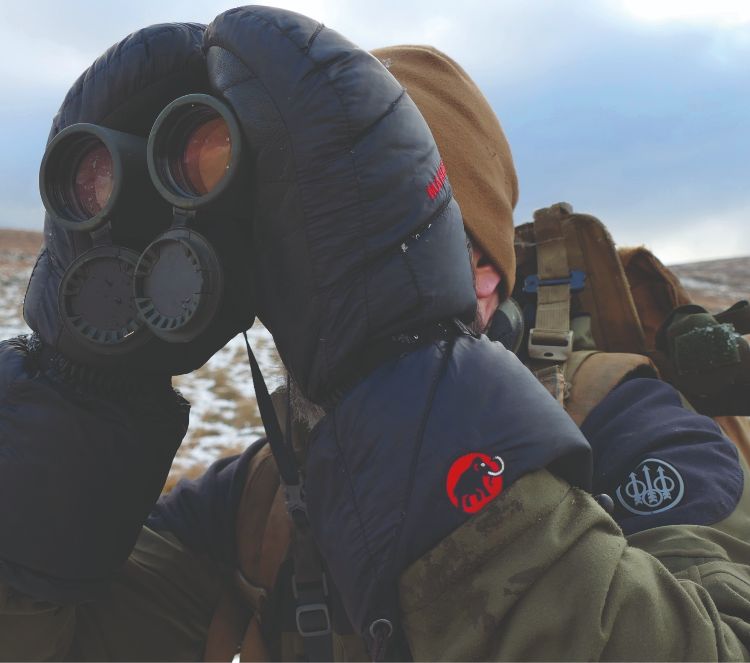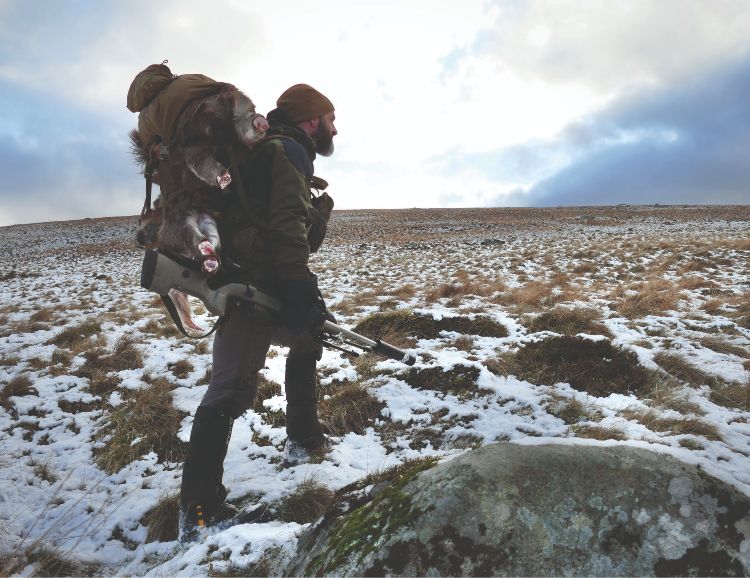This month we take a look at what to do when you do miss. Life is full of ups and downs. We ride the wave of success until it crashes onto the rocks of despair. No matter the problem, the most important thing is not what happened but what you did to fix it. In the specialized sphere of harnessing elite performance, we are all at the mercy of statistics. We have an average performance that is based on many factors. Sometimes we perform above this average and have a great run of ‘good fortune’; sometimes we dip below with a run of ‘bad luck’.
In the cold light of statistical analysis there is no luck involved, but if you have hunted for long enough you will know that “a good hunter needs good luck”. I have often been heard to say that I am the luckiest man that ever walked – often when the odds are stacked against me. When I do that I’m not bragging, but rather vocalising a positive outcome. It takes the pressure off, keeps things calm, avoids any rushing or panic, and allows me to focus on the process and be in the best frame of mind possible when an opportunity appears.
 What’s also important is to realise that I don’t actually rely on luck. I know that if I work hard and completely focus on each step of the process then I won’t miss any opportunity that presents. Having said all that, it must be understood that we all miss – except those who never shoot. As a guide, I see hunters allow opportunities to walk away from them; rushed shots when there is no need to rush; perfect stalks and ideal setups turn to disaster. When this happens I think to myself: I too have missed; I too have messed up. What’s the best step to take now?
What’s also important is to realise that I don’t actually rely on luck. I know that if I work hard and completely focus on each step of the process then I won’t miss any opportunity that presents. Having said all that, it must be understood that we all miss – except those who never shoot. As a guide, I see hunters allow opportunities to walk away from them; rushed shots when there is no need to rush; perfect stalks and ideal setups turn to disaster. When this happens I think to myself: I too have missed; I too have messed up. What’s the best step to take now?
There is no single answer for what to do when a shot goes wrong, but let’s look at some common scenarios and courses of action. The first thing is to see your miss. This can be achieved by correct magnification selection, solid recoil management and follow through. A second set of eyes can also be a great help.
In a sniper team, the spotter’s role is to call your shot and help apply second shot correction, but it is also expected that the shooter can make this call on their own. If you know where you missed, then you can apply the correction and quickly get in a second shot. There are a number of reasons that this might happen: incorrect wind call, incorrect ranging of the target, incorrect application of windage or elevation, shot deflection, or poor execution of the shot.
With practice you can improve your ability to observe strike, reload and apply a correction to the second shot. Sometimes I see hunters hesitate about taking that second shot, but to my mind it doesn’t matter. Get it in if needs be and if you have the opportunity.
Seeing your hit requires the same discipline as seeing your miss, but should be easier to observe. It comes with additional information to process, such as the animal’s reaction to the shot. A head down and hunched up walk away is typical of a gut shot; a jump and kick can be a heart shot; standing and looking for a second followed by a dash away is typical of a clean miss.
Shot placement and reading the signs dictates how and when you follow up. Sometimes you don’t know exactly where you hit, but you will always know where you aimed, and this can help with your decision on the next step to take. Spine-shot deer will drop to the shot, this gives immediate relief to the shooter, but such a deer may not be dead. In such cases I always recommend an immediate follow up and preparation for a second shot.
In some cases the original shooting position may provide good observation of the animal and allow you an immediate second shot or the ability to observe it expire. If the animal drops out of sight I always follow up immediately and am prepared for a second shot if necessary.
In many cases the deer is paralysed on your arrival and requires dispatching as the heart, lungs and brain are all still functioning but the spinal cord has been severed. The knife is often the safest and most effective tool for dispatch in such cases, but it requires care to avoid injury to yourself and efficiency to ensure the most rapid and effective end for that deer.
 For this purpose I always carry a knife in my bino harness. It has a stout, sharp 4" blade that is easy to manipulate and a good grip on the handle. You should treat the approach like a stalk and look to control the deer’s movements with your own weight. For smaller species this can be as simple as standing on an antler or sitting on its shoulder. There are numerous ways to use the knife for dispatch – either sever the spinal cord or bleed the animal out. I use a hybrid approach on medium-sized deer, cutting the jugular just behind the line of the jaw and then snapping the neck back as you would to remove the head.
For this purpose I always carry a knife in my bino harness. It has a stout, sharp 4" blade that is easy to manipulate and a good grip on the handle. You should treat the approach like a stalk and look to control the deer’s movements with your own weight. For smaller species this can be as simple as standing on an antler or sitting on its shoulder. There are numerous ways to use the knife for dispatch – either sever the spinal cord or bleed the animal out. I use a hybrid approach on medium-sized deer, cutting the jugular just behind the line of the jaw and then snapping the neck back as you would to remove the head.
For larger species more caution is required as the risk of injury is higher and if you are unsure then a follow-up shot is possibly more prudent. Such follow-up shots should take account of both backdrop and the chance of a ricochet. You should always know where your fall of shot is at close range. After all, a situation may arise where you need an accurate shot at a small target, such as when threading a shot through branches for a head shot at 25m – do you know where to aim?
It is also important in follow-up scenarios that you are capable of delivering a shot freehand or rapidly from sticks. This is where practice and confidence pay off, so don’t fall into the trap of only ever shooting your rifle off the bench. Shot placement for dispatch is normally to the brain; you should study your species’ anatomy to ensure you know where to place that shot when the time comes.
Deer shot in the heart and lungs can often run some distance before expiring. There are a number of important factors here. The first is to note the location of the deer before you shoot, using landmarks or distinctive features plus a range from your location. Don’t make the mistake of only doing this through the scope. Using your unaided eyes to pick out the features will be more useful afterwards. I sometimes whisper this description to myself or whoever I’m hunting with to help commit it to memory. You’d be surprised how difficult it can be to recall these little features after something goes wrong.
Having your scope not zoomed in too much can help you track the deer you’ve shot. This is important for a follow-up shot and also for observing where a well-shot deer expires so that you can confirm it’s down and know where to recover it.
Sometimes the deer almost immediately goes out of sight, but if you can walk to where it was shot then you will have the benefit of the clues that lie there. These can include hair, blood and bone. There can also be signs in soft ground and particularly in snow. Each of these clues can be read by the experienced eye.
The type of blood is probably the easiest to read. Pink and frothy is lung, red can be heart or arterial (this may or may not be fatal depending on volume), dark red can be liver, and tainted with green/brown material with a nasty niff can be the dreaded gut shot. A head torch is handy tool for reading a blood trail in forestry. Even in the full light of day it can help you see drops of blood, as such tracking can often be a hands and knees affair.
Bone can be harder to read, especially with bullets that expand to give a large exit wound. The main thing you don’t want to see is long splinters of bone, which may indicate a leg shot. Hair, or pins as they are called, can also be difficult to read depending on the species and the variations in coat composition.
In all of these scenarios a good tracking dog will be invaluable, but you still need to know when to follow up immediately and when to wait it out. For gut-shot deer it is usually best to wait for six or seven hours and then follow up with a dog. The exception to this is when you have an experienced dog that can hold a deer. This will also depend on the species of deer and the terrain and the dog can sometimes want to give chase, so it is a tactic that is best reserved for exceptional circumstances.
As in a tactical situation, a lot happens in a short time. There is a lot of information to process and recall, especially if you have shot a number of animals from the one spot. In tactical training, operators practice recalling exactly what happened in each room or location. This is for legal accountability and even in very dynamic and complex scenarios the recall of exact actions can be perfected – but it takes training and attention to detail.
The same discipline can be applied to hunting, but you really need to focus and actively engage in memorising each phase of the scenario. If you get good at it, then it will help you piece together the puzzle that sometimes remains after the shot and give you a positive result even when things don’t go exactly to plan. And anyway, a plan is just a starting point for change.
